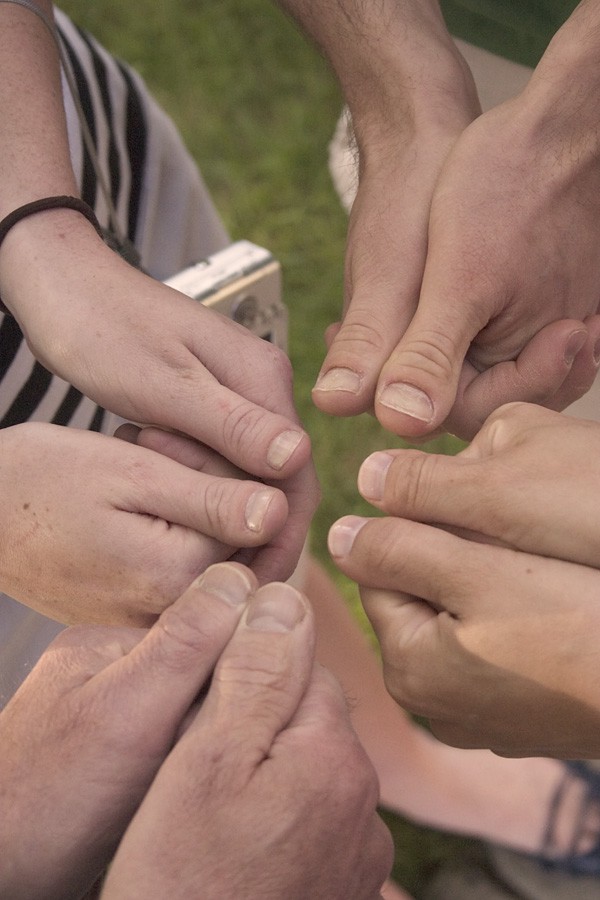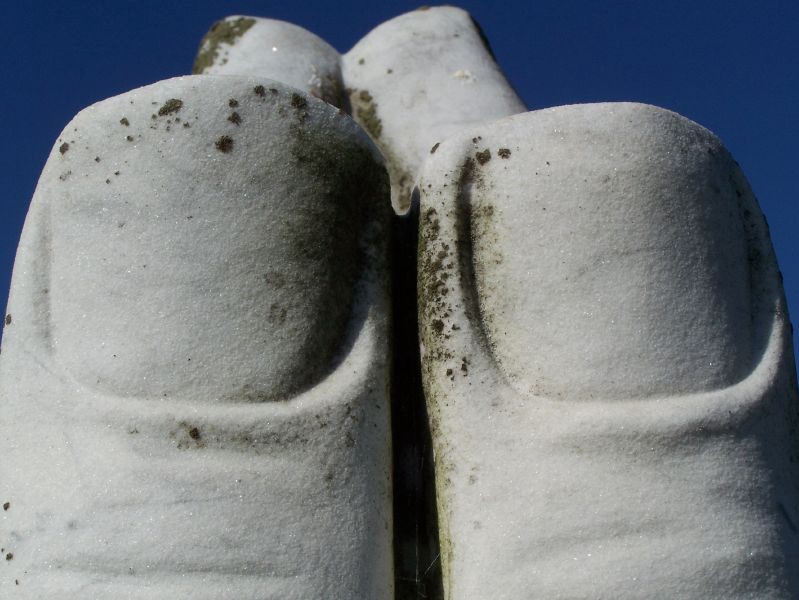Well Thumbed
What’s the real significance of a harmless physical malformation?

Around 117 years ago, a thirty-something anthropologist named William Curtis Farabee heard about members of a family, the Davys, who shared an intriguing trait. Thirty-seven people in this family had malformations of the hands and feet with shortening of the fingers and toes. They otherwise appeared normal, and suffered no problems from their condition, other than some difficulty in knitting and playing the piano. They thrived as farmers, homemakers, teachers, mechanics, and weekend baseball players.
Farabee, who had been one of the first people in the U.S. to go for a Ph.D. in the field of physical anthropology, headed from Harvard to Pennsylvania to examine and interview the Davys. He measured their digits, traced the outlines and took photos of their feet and hands, detailed their family tree, and made plaster casts and x-rays of the malformed parts. Farabee noticed that the shortening of the digits always resulted from one or more unusually small phalanges, or the segments between the joints.
After spending time with this family, Farabee completed his dissertation in 1903, giving the first genetic analysis of people afflicted with this condition that now bears the awkward name of brachydactyly. The Davys, of course, weren’t the first people to have it. They inherited it from their ancestors, and fossil evidence has since turned up showing that people even had it in prehistoric times.
Today, brachydactyly is categorized into five types. I know one of them, type D (or BDD), intimately. When my daughter was about 13 years old, she matter-of-factly informed me that she had deformed hands. My puzzled expression prompted her to present her thumbs. They are small and stubby, and her thumbnails are short and wide. Maybe I’m a somewhat unmindful parent, but I had never before noticed how her thumbs looked. Then she showed me her big toes, which are shaped the same way.

She told me not to worry, though, because the actor Megan Fox has the same condition, and she’s doing fine. Also, there was a Facebook group devoted to her malformation.
Not completely reassured, I did some research on brachydactyly. People with types A, B, C, and E have misplaced or missing digits, fingers and toes of wildly varying lengths, and other easily noticeable differences. Those with BDD only have shortened terminal phalanges on the thumbs or toes, resulting in irregularities that aren’t very obvious. One researcher called it a trait “of minor clinical importance” that persists at a low level in the genetic makeup of our species because people who have it experience no particular harm or benefit.
Minor or not, BDD occurs in enough people — 1 to 1.5 percent of the world population, more prevalent among some ethnicities — to have acquired nicknames. Those nicknames are not all nice. “Stub thumb” and “potter’s thumb” seem not too bad. “Dutch thumb” sounds bigoted, and “clubbed thumb” suggests a disability more debilitating than it really is. But the most common nickname, “murderer’s thumb,” is especially nasty.
I blame the popularity of that last nickname on palm readers, who for more than a hundred years have shouted alarm and assigned brutish qualities to the people who present their adorable thumbs for examination. The palmists spout all kinds of nonsense about BDD — for instance, that thumbs are the receptacles of our will, and someone with a wide and stubby thumb must be bottling up that will at the risk of it suddenly exploding out in violence. Or that BDD identifies people prone to uncontrollable rages because they’re crippled by coarseness and stubbornness. “Their brutal instincts being strong,” wrote palmist William George Benham in his 1901 manual The Laws of Scientific Hand Reading, “jealousy most often has led them to fits of violent rage, and the terrible qualities of the clubbed thumb have given them passion and determination strong enough to take human life.” The good news was that the palm-readers also thought criminals with short thumbs lacked the reason and forethought to actually plan out a violent act.
For years, fortune-tellers and pseudo-scientific criminologists, riding a wave of century-old thinking that connected physical attributes with aberrant behavior, insisted that our prisons were full of violent felons tellingly afflicted with brachydactyly. That wasn’t true, of course, but the belief in the criminal significance of the condition trickled into pop culture. A 1916 silent film titled The Spatulate Thumb, co-written by the celebrity actor Lionel Barrymore, told the story of a murderer whose incriminating thumb leads to his identification as a killer by an observant lawyer. Four years later, a story by the pulp novelist J. Allan Dunn, published in the popular magazine The Argosy, featured a villain whose opened hand revealed “a narrow palm, a clubbed thumb.…He was stamped as evil from his birth!”

While few people other than palm readers still think of BDD as inherently evil, the condition continues to have a shady reputation, even among those who have it. When I’ve brought up BDD on social media and blogs, the number of people who reply with shame or embarrassment is striking. “I have these ‘hammer thumbs,’ as my grandfather used to call them,” one wrote, “Ha hah, well I inherited these thumbs which at times I feel have ruined my life. No, but seriously I’m a nail tech, and at times I would love to make nail videos, but with these thumbs I’d probably scare people away!” Another said, “I have thumbs like this on both hands, and I used to be bullied because of it. It’s frustrating when it comes to nail videos, because I wanted to make videos like nail tutorials, but I was worried that my thumbs would be made fun of. I can’t even get acrylics at a nail salon.”
That discomfort goes beyond feeling stymied in making nail videos. “I just have one clubbed thumb on my left hand,” another commenter wrote. “It sucks when u get labeled as an evil murderer just for inheriting a genetic mutation. I get really down about it. No one in my family that I know of has this. I hate looking at it. I hide it all the time. I seriously just want to chop it off. It looks so disgusting to me.”
It made me sad to read that response. One of Farabee’s findings more than a century ago was that the forms of brachydactyly he studied passed from one generation to the next in accordance with the laws of heredity that Gregor Mendel had theorized some 50 years earlier — and in fact Farabee’s research offered the first confirmation that the principles of heredity applied to humans as well as to other animals and plants. So there should be no stigma or self-recrimination attached to short thumbs or toes, and there’s absolutely no reason to think that their presence signifies anything other than the result of a genetic toss of the dice.
My daughter has never harmed anyone and rarely loses her temper. She’s not a violent offender, and she doesn’t pack her stored will into her digits to the point of explosion. I look at her thumbs and toes and think they’re cute — and more. They tell an engrossing story of human variety and genetics. Without them, she’d be someone else. This dad is proud that his kid has murderer’s thumbs.
Jack El-Hai (@Jack_ElHai on Twitter) writes about the history of medicine. He is the author of The Nazi and the Psychiatrist: Hermann Göring, Dr. Douglas M. Kelley, and a Fatal Meeting of Minds at the End of WW2.
